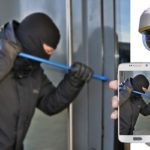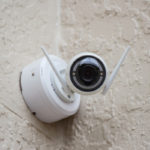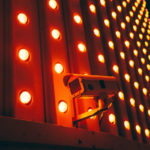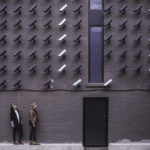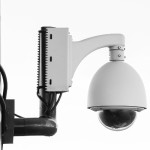Video Surveillance Tricks
Surveillance systems installed at your home or business help to enhance your security by allowing you to keep any eye on your property. They can aid in keeping your loved ones safe, as well as potentially deter criminals from targeting you. And after installation, there are ways to make the most of your surveillance system. Review these tricks to enhance your security.
- Learn The Ins & Outs
Security cameras have different features, so it is important that you choose one that suits your needs. It is also imperative that you learn what your surveillance cameras can do by reading manuals and watching tutorials as necessary.
- Get The Mobile App
Most surveillance systems have an accompanying app which allows you to access your feed and manage your system remotely, as well as provide alerts. Without it, you miss out on these great opportunities to enhance your security.
- Register For E-Mail Alerts
When motion or suspicious activity is detected, you will be notified via e-mail which may be accompanied by video footage.
- Register For Text Alerts
For even faster access, sign up for text alerts. You’ll get essentially the same alert you would via e-mail, but in a text.
- Choose The Right Cameras
As mentioned, it is important to choose cameras with the right features and functions that will cater to your specific surveillance needs. For example, night vision cameras are great for areas that need around the clock monitoring, and day/night cameras are great for outdoor use where lighting can vary. There are a multitude of security cameras on the market with a variety of features so you are sure to find the ones that suit your needs.
- Petsit & Babysit
Indoor security cameras can give you peace of mind when it comes to pets and older children who may be home alone.
- Understand Privacy Mode
If you want to record but don’t want the recordings to be visible remotely, you can turn on privacy mode.
- Set Scheduled Times
Rather than setting your security camera on motion detection only, you can set the times you want your system to record. You can watch the footage in real-time or at a later date, either on the web or your mobile device.
- Manage Your Cameras Remotely
As mentioned, you can manage your camera system remotely via an app installed on a PC or smart device.
Share your own surveillance tips and tricks with us on Facebook, Twitter, LinkedIn, and Pinterest.
If you need helping choosing a new security camera system for your home or business, please feel free to contact us! You can browse our stock online or give us a call 888-203-6294 to speak with one of our representatives directly. Your security is our priority and we are always happy to help.
What You Need To Know About Cloud Cameras
What are cloud cameras and why should you invest in them?
A cloud-based security camera, or cloud camera, is a security camera that is closely related to the IP camera. Both cloud and IP cameras connect to the internet, however, with cloud cameras, you need not assign IP addresses to each camera. Cloud cameras make it simple – all they need is a power cord and an Ethernet cable and you’re set. Cloud cameras will come with software or an app that enables streaming and remote camera management via smart device or computer.
On the upside, cloud cameras offer excellent benefits for users. First of all, these cameras are extremely easy to set up as they essentially plug-and-play. They are compact, affordable and accessible.
Cloud-based cameras also allow you to access your video feed virtually anytime from any place. While IP cameras can also provide this benefit, they require a bit more extensive set up to ensure proper performance and security.
In addition, cloud cameras boast automatic updates, device software improvements, and security vulnerability patching. Maintaining any additional hardware and software is no longer a worry.
With these advantages come some disadvantages. Cloud cameras come with monthly fees and limited functionality depending on how much you are willing to pay. And your provider may raise prices at any time, thus you must pay the higher price or purchase a different camera.
Privacy concerns and security risks are another factor, as your video feed is available on an external server. Also, because your cloud camera will be constantly sending data over the internet, it can slow down connection for other internet activities. For those in areas with slow service or data caps, cloud cameras may not be a feasible option.
The important thing to remember is that there are numerous security cameras with different features on the market. You should evaluate your needs and research different types of cameras to determine which type is right for you. If you need some help or have any questions, please feel free to contact us at 888-203-6294. You can also browse our selection of top quality security cameras at cost-effective prices online at SecurityCamExpert.com. Connect with us on Facebook, Twitter, LinkedIn, and Pinterest.
Types Of Night Vision Security Cameras
Security cameras with night vision are crucial for monitoring your property around the clock. Night vision technology allows you to capture usable images in low to no light conditions. This is extremely helpful as most burglars prefer to lurk around in the darkness.
Whether you are safeguarding your home or business, night vision security cameras are a great investment. Before you start shopping, review the different types of night vision to decide which will work best for your surveillance needs.
Low Light Night Vision
Low light night vision is also known as image intensification as it relies on image intensification technology to deliver colored night vision in very low light. Please note that in order to produce a color image, these security cameras need some available light.
Low light night vision cameras use an image intensifier which is a vacuum-tube based device. Electrons are emitted through a vacuum tube when the light strikes a charged photocathode plate. These electrons then strike the microchannel plate that cause the image screen to illuminate with a picture in the same pattern as the light that strikes the photocathode (on a frequency that the human eye can see). The image is said to be “intensified” because the output visible light is now brighter than the incoming light.
Benefits
- Despite needing some visible light in order to record, low light night vision cameras outperform IR night vision cameras.
- These are the only security cameras that can produce a color image in low light level conditions.
- You can find these cameras at cost-effective prices.
Infrared (IR) Night Vision
These days, most security cameras come with built-in infrared LEDs to provide night vision in low light or no light conditions. One of the most important features of these cameras is the infrared cut filter or infrared cut removable.
The IR cut filter is a mechanical shutter design – it is a piece placed between the lens and the image sensor, controlled by a motor or an electromagnet. These are used with color CCD or CMOS cameras to produce accurate color images.
When IR cut filter is activated, it will block IR light and allow only visible light to pass through. When the ICR is turned off, IR light will be allowed and images will turn into black and white mode.
If it’s controlled by a light sensor, at twilight, it simply sends a remove signal to the IR cut filter so that more light could reach the image sensor of the camera, thus, a black and white image is produced.
It is important to know that IR security cameras can be affected by glass reflection or window glare at night. Your video may be washed out due to overexposure of lights at night. If necessary, turn off the IP LEDs and any other LED indicators on your security camera.
Benefits
- Infrared night vision cameras can record in pitch black condition without additional light.
- These cameras are the most inexpensive, use less energy, and are very efficient.
Thermal Night Vision
Thermal night vision cameras have a unique lens that allows IR energy to pass through it. The focus light then hits a sensor that scans the information and draws from several thousand points in the field of view. This process creates a thermogram (an intricate temperature pattern) which quickly develops and then transforms into electric impulses, which are directed to signal processing unit that translates the information into data for the visual.
Created image displays as various colors that correlate to the amount of IR energy emitted. Instead of intensifying light, thermal night vision uses heat and can see no matter the light level. Thus, even in total darkness and poor weather conditions, thermal imaging technology allows users to detect and see at great distances.
Benefits
- Thermal cameras are the only solution to address a visible image contrast to see at night.
- As mentioned, these cameras are completely immune to smoke, dust, and anti-CCTV surveillance devices (visor glasses, infrared laser glasses).
- Government agencies, security companies, and large corporations rely on thermal security cameras for many security applications because they eliminate false alarms.
For a wide selection of quality security cameras, surveillance system packages, and more, please visit SecurityCamExpert.com or call 888-203-6294. You can also connect with us on Facebook, Twitter, LinkedIn, and Pinterest.
Upgrading Security Camera Systems
It’s about time to upgrade your analog cameras to HD-CVI or IP security cameras. By upgrading, you are equipping your home or business with more advanced surveillance solutions. These advanced cameras deliver top quality, with 720p or 1.3 Megapixel and up to 4K resolution. Worried about the compatibility with your current system and the new cameras? Luckily, there are products out there to aid in a smooth transition. And if you have any questions, you can always call SecurityCamExpert.com at 888-203-6294.
Here are some tips to help you ease into a better quality surveillance camera system.
Storage
If you are only upgrading a few cameras, hybrid and tribrid DVRs allow you to use new HD cameras with your existing equipment. However, higher resolution cameras will use more disk space.
If you want to maximize your storage space, you may want to consider is decreasing the frames per second at which you are currently recording. For example, if you are recording at 30 frames per second, you may scale that back to 15 frames per second. You will save storage space while still producing quality images.
In addition, if you are currently recording around the clock, you may want to switch it to motion-only. This setting allows your camera to remain in standby mode and only record when motion is detected.
Wireless Bridge
A wireless bridge is used when you want to install a camera in an area where it is impossible to run cables. It can be set up as a transmitter or a receiver. Each camera needs one transmitter, but the receiver can receive signals from multiple transmitters.
But remember, this will only work with network or IP cameras. And for most cameras, you will still need a power source.
Baluns
You may be hesitant to upgrade because wiring your system can be a costly hassle, however, baluns could be the easy and convenient answer.
Your existing cables depend on the type of security camera system you have. Most IP camera systems use CAT5 or CAT6, while traditional analog systems and HD-CVI systems run on cables more commonly known as Siamese cable (which is coaxial cable along with and 18/2 power wire).
A balun is a type of converter that you put on each end of your existing cable. Depending on the type, it will either allow you to convert CAT5 to an analog signal or use your analog cables with IP cameras.
DDNS (Dynamic Domain Name Service)
For remote access and viewing of your surveillance footage, you need to connect your system to your home or business IP address. Unfortunately, these are usually provided by your internet service provider (ISP) and they will often change this IP address, making it difficult for you to connect to your system.
The DDNS is a personal domain name (ex. “YourLastName.DDNS-service.com”) which will always resolve back to your home IP address regardless of what the IP address is, even after it has changed. Thankfully, a DDNS configuration is built-in most new security recorders, so when your home IP address changes it will contact the DDNS service and update it so that your domain name will always resolve back to your home or business.
If you need helping choosing a new security camera system for your home or business, please feel free to contact us! You can browse our stock online or give us a call to speak with one of our representatives directly. You may also connect with us on Facebook, Twitter, LinkedIn, and Pinterest. Your security is our priority and we are always happy to help.
Security Cameras: Do’s & Don’ts
Security cameras help to protect homes, businesses and various properties from burglaries, vandalism and more. Unfortunately, if they are not installed properly, they can do more harm than good. Before you invest and install a video surveillance system on your property, review these security camera do’s and don’ts.
DO:
- Place the camera where the roof or ceiling meets the wall.
This spot naturally shields the camera from the elements, and it can usually give you the widest angle of viewing. - Protect your cameras from weather, tampering, and vandalism.
Depending on your security cameras location, you may need to invest in a weatherproof casing to shield it from environmental conditions. Also, be sure to mount your cameras out of reach and with a protective plate to prevent criminals from tampering, disabling, or damaging your equipment. - Securely mount your surveillance cameras.
Be sure that your cameras don’t shake or wiggle if walking or other movement sends vibrations to the wall. This instability could distort the images that your camera is transmitting and could potentially cause damage to your cameras. You may need additional mounting brackets or equipment to ensure your cameras are securely mounted. - Place cameras in heavily-trafficked or shrub-heavy locations.
Because bushes provide cover for intruders, having a camera monitor these potential hiding spots will improve your surveillance. You also want to have eyes on areas with heavy traffic such as walkways or gates. - Set your base unit in your attic.
This is often the most convenient spot for all of your cameras’ wiring to originate from. It also minimizes the need to string cables up and down walls if they can be run on the insides of your eaves under your roofline.
DON’T:
- Just install a camera in an area that won’t be well-lit at night.
If you want surveillance around the clock, be sure that your security cameras have night vision or an infrared setting or lens that works in low light. For outdoor cameras, pair your cameras with exterior lighting with motions sensors if possible. - Attach a camera to a gutter.
This is always a bad idea. Despite being high up and out of reach, the camera is completely exposed to the weather and its weight will put undue stress on your guttering system. - Limit your cameras to just your front door.
You should be monitoring all areas where criminals can potentially gain access. Install surveillance cameras near your back doors, side entrances, and sliding glass entryways. You may want to consider a security camera at the top of your basement stairs in case someone gains access to your basement. - Place a camera right above a basement window.
This location leaves your camera within reach to be disabled or vandalized. Instead, mount a camera under the eaves or even a second-story roofline and direct the lens toward the basement window. - Assume wireless means “completely wireless.”
This is not always the case. Even if your surveillance system operates using wireless signals, each camera and your base unit will still need to be plugged into a power source.
Share your own tips with us and your peers on Facebook, Google+, Twitter, LinkedIn, and Pinterest.
Your security is our priority! If you need help choosing the best security cameras for you, feel free to browse our selection online at SecurityCamExpert.com or call 888-203-6294 to speak with a representative directly.
Security Cameras Have Come A Long Way
It may be hard to believe, but the video camera has been around for more than 100 years (Fun fact: Thomas Edison helped develop it). A while after its inception, a handheld version was created, making cameras small enough to be out of sight. This technological advancement then spurred the beginning of video surveillance.
Before there were internet-connected cameras, there was Closed Circuit Television (CCTV). For a long time, CCTV was the security camera. CCTV security cameras were installed and directly connected to monitors. Then, you could either pay someone to monitor your camera feed or review recordings after the fact. Neither of these options was ideal – the former was costly, while the latter was not helpful in preventing incidents.
Luckily, improvements in technology have made it easier and more affordable to employ surveillance systems. We can now access live feeds from our security cameras remotely, which would not be possible without the advent of wireless security cameras and IP cameras. Here are some of the more prominent milestones of security cameras.
Streaming vs. Recording Cameras
As mentioned, most wireless security cameras these days are streaming live footage rather than using CCTV. It was about 20 years ago when IP cameras entered the market and changed the security industry. At this time, the video quality and technology were not yet up to par, but over time that changed. Continuing advancements brought forth IP cameras with high quality video along with the ability to stream online and control cameras remotely.
Hazard Detection
Video Content Analytics were first introduced about 10 years ago. The integration with security cameras enables multiple functions:
- Motion Detection: recognizes when a image changes as new subjects enter the field of view.
- Auto-Tracking: camera can follow a specific subject automatically.
- Smoke/Flame Detection: recognizes hazardous conditions related to fire to possibly prevent excessive damage.
- Tamper Recognition: camera offers real-time notification and works to suppress surrounding noises when tampering or disturbances are detected.
- Shape Recognition: allows face recognition to automatically identify people that enter the field of view.
Laser Focusing
One of the challenges with security cameras was poor footage with dark, unfocused recordings. Fortunately, laser focusing was introduced and provides better picture and recording in limited lighting environments. Security cameras that have laser focusing deliver improved zoom and picture quality as this feature enables nearly immediate focusing via laser. Infrared technology also improves visibility in dark conditions (much like night-vision goggles).
For a great selection of quality security cameras and surveillance systems, visit SecurityCamExpert.com or call 888-203-6294. You can also connect with us on Facebook, Google+, Twitter, LinkedIn, and Pinterest.
Investing In Business Surveillance
Installing video surveillance for your business may be a significant investment, but it can also provide numerous benefits. Although concerns about privacy and costs may prevent businesses from seeing their true value, many will find that business surveillance not only protects the owners, but also the employees and customers alike. Overall, a business surveillance system can prove to be a valuable asset for businesses. Here are just some of the reasons why.
- Deter Thefts
While video surveillance may seem to be targeted toward outside threats, it can very well prevent insider thefts. Unfortunately, employee theft is a serious and common occurrence for many businesses. Security cameras can help to monitor employees, account for anything that goes missing, and deter employees from misconduct. - Increase Profits
Analyzing video can help businesses learn how to improve their strategy and increase productivity. Managers may supervise employees remotely, allowing them to determine which employees are helping or hurting the business overall (for example, too much conversation or inappropriate internet habits). Reviewing footage also helps businesses see which times of day are over or understaffed, enabling them to adjust shifts accordingly to maximize profits.In addition, businesses with video surveillance systems may be eligible for savings on insurance. The potential savings for having a security system installed may be significant and should be taken into account when determining whether or not to invest in surveillance.
- Workplace Incidents
Frivolous lawsuits are more common than we would like to admit. Luckily, video surveillance can help to protect your business in these instances. Surveillance footage may be used as evidence for legal purposes. And as mentioned previously, the presence of security cameras can deter harassment, violence, and other misconduct from employees, customers, or other outsiders.
Does your business have a surveillance system? What other advantages can business surveillance provide? Share your thoughts with us on Facebook, Google+, Twitter, LinkedIn, and Pinterest.
If you need help choosing the right security camera system for your business or home, please feel free to contact us at 888-203-6294 or visit SecurityCamExpert.com to browse our selection.
PTZ Cameras: What To Look For
PTZ security cameras offer Pan, Tilt, and Zoom capabilities for more advanced and comprehensive surveillance. Because of their unique flexibility and broad coverage, PTZ cameras are often chosen to remotely monitor large areas such as parking lots or stadiums. If you are considering installing PTZ surveillance cameras for your property, here are some of the best PTZ camera features and benefits.
Large Field Of View
Depending on where you install your PTZ camera, it could have a 360 degree field of view. In addition, most cameras can be pre-programmed to provide specific viewing angles at pre-determined times. Pan and Tilt can also be pre-programmed. Thanks to this, PTZ cameras can do the job of a multi-camera installation, making them a cost-effective and smart alternative for large area surveillance and protection.
Motion Tracking
Most PTZ cameras come with built-in tracking which can be set to detect motion and track a person or object, automatically panning, tilting or zooming to follow the person or object as it moves. This feature can prove invaluable should a theft or vandalism occur on your property. When choosing a PTZ camera, full motion tracking capabilities is a must.
Night Vision
This is an important feature in nearly all security cameras, but especially in areas with poor lighting conditions. The modern, more advanced PTZ cameras can capture images in total darkness thanks to LEDs and special IR filters. The small LEDs emit infrared light, which is not visible to the human eye, but with the special IR filter, the camera sees a well lit area.
Remember that a PTZ camera that is rated for a detection range of 600 feet or more will usually be rated for a max range of 400 feet for night vision. Also, it is recommended that you set up your PTZ cameras in the same lighting conditions they will be recording in, whether dark or light.
Weatherproof
If you will be installing PTZ cameras outdoors, they must be weatherproof. Most PTZ cameras are designed to withstand harsh elements, but it is wise to double check the specifications to ensure their durability. Weatherproof PTZ cameras can be installed in very remote locations such as rooftops or the sides of tall buildings.
Powerful Zoom
PTZ security cameras have a detection ability that ranges from 150 feet (on the low end) up to 1,000 feet (on the higher end). The ability to zoom in on a person or object ranges from 12X to 36X for higher level PTZ Speed Domes. This makes them ideal for large parking lots or building tops as it allows the camera to be discreetly out of sight while still providing the option to zoom in for a better picture of what is happening.
Tamper Resistant
The best place for a PTZ camera is mounted high above the ground, which enables the best view possible, a wide 360 degree range, and added protection. As mentioned, most PTZ cameras are built tough, with rigid metal housings and high-strength polycarbonate domes that are virtually shatterproof to vandals.
Alarm Inputs
Most PTZ cameras have four alarm inputs, which connect to other important devices (ex. motion detectors, door contacts, glass break sensors). The camera can be programmed so that when activity occurs in a given area, other programmed activity is halted in order to zero in and record what is going on.
Auto Focus
The good PTZ cameras will have full range auto focus built in. This ensures clarity no matter where you pan, tilt or zoom. In addition, most have an auto adjust IR LED that quickly focuses the picture when moving the camera in areas of complete darkness. This feature is almost always missing from cheaper cameras.
Simplified Installation
Because they can cover a wider area, it may be more cost-effective to install a couple PTZ cameras to monitor your property (ex. parking lots, garages) rather than implementing several fixed security cameras. You can save on both the initial cost and installation of your system.
High Definition Options
Higher end PTZ Speed Domes are also available in IP versions, which will deliver resolutions from 720i to 1080P, and with HD-SDI technology, which provides high definition video in full 1080P resolution. The HD-SDI PTZ cameras are easier to install and maintain than IP cameras since they are installed and set up exactly the same way as standard analog cameras.
These types are only recommended when you need the highest resolution images possible. They require 2-4 times as much hard drive space as regular analog security cameras and are rather expensive for large installations.
For a great selection of PTZ security cameras and other surveillance system equipment, please visit SecurityCamExpert.com or call 888-203-6294. You can also connect with us on Facebook, Google+, Twitter, LinkedIn, and Pinterest.
What Can Your Security Camera Do?
Surveillance camera systems help to provide home and business owners security, protection, and peace of mind. But did you know you can use your security cameras for additional purposes? Here are some lesser known uses and benefits of security camera systems.
- Time Lapse Videos
Some cameras come equipped with a time lapse feature which can allow you to create videos to display changes over time. These are great for construction or demolition sites, for capturing weather, nature, or wildlife.
- Animal Life
Do you manage a barn, farm, or ranch on your property or remotely? Security cameras can save you time and travel costs by allowing you to check in on your animals remotely. And if you have pregnant livestock, you can keep an eye on the progress and possibly record the birth.
- Pranks
If your family is a fan of pranks, security cameras can come in handy. Features like two-way audio and alarms can startle your unsuspecting guests, and you can capture the reactions as a souvenir.
- Check Weather
Did you know security cameras help when checking the forecast? When you see images and footage from remote areas, such as when you are checking a weather application, those are taken from strategically placed security cameras.
- Capture Precious Family Moments
Whether it’s your baby’s first steps or first words, you may be able to capture it on video. If you were away when it happened, you can review it later, and you can also share the special moment with other family members and friends.
- Insurance Discount
While the cost of security cameras may discourage homeowners, the benefits of having it should be considered. Aside from peace of mind, insurance agencies often offer a discount as well. And this discount can help to offset the costs of the system.
- Prevent Abuse
Nanny cams help to ensure that your babysitter is behaving properly and that your children are safe. On the other hand, nanny cams can also help you keep an eye on your elderly family members and caregivers to make sure your loved ones are not in danger.
- Medical Assistance
Speaking of seniors, especially those who live alone, some home security systems come equipped with emergency pulls or medical alert pendants. When triggered, these instantly dispatch emergency assistance to homes.
- Stop Trespassing & Vandalism
Whether it’s the neighborhood kids or unwelcome intruders, your security cameras can help to prevent any trespassing or vandalism.
- Household Mysteries
Have things gone missing or end up in random places in your home? Want to know who finished your leftovers in the refrigerator? You can review your surveillance footage to solve the mystery.
- Guard Your Garden
For the gardeners out there, you can set up security cameras with motion detection to monitor your goods. If squirrels, raccoons or the like are ruining your crop, you can set up your motion sensor to sound an alarm to scare off the critters.
- Latchkey Kid Safety
Security camera systems enable you to have peace of mind when it comes to latchkey kids. Your system can alert you when someone enters your home, therefore, you will know when your kids get home from school. You may disarm the alarm remotely or have your children do it.
- Increase Resale Value of Home
Having a surveillance system already installed in your home can increase the resale value of your home. It can also keep your home protected during the selling process as you can keep an eye on the strangers that come and go during open houses and inspections.
What other benefits can you think of? Share with us on Facebook, Google+, Twitter, LinkedIn, and Pinterest.
Let us help you choose and install the security camera system of your dreams. Browse our stock online at SecurityCamExpert.com or call 888-203-6294 today!
Important Night Vision Camera Features
Night vision security cameras are very helpful in providing around-the-clock surveillance for homes and businesses. Their ability to see in the dark is thanks to advanced IR (infrared) surveillance technology. However, when shopping for a night vision camera, simple wording such as “infrared (IR) illumination” and “night vision” is not enough. You want to look for specific features to ensure you are choosing the best night vision security cameras.
Three important features to look for include:
- IR cut filter
- Powerful Illumination
- Infrared Illuminators (ideally, these match the FOV (field of view) of the camera’s lens)
The quality of your night vision security camera will be determined by these features.
IR Cut Filter
Night vision security cameras with infrared cut-off filters improve image clarity (especially in daytime) and can prevent out of focus images. The way the filter works is quite simple, yet makes all the different in video and image quality.
The IR cut filter is physically moved over the lens when daylight (white light) is detected to block out the IR light (that would affect the image quality). When the light levels drop to the point where night vision is necessary, the camera will move the lens out of the way. This “filter switch” allows the camera to pick up the same colors as the human eye to record natural looking images and results in better images overall. Without these filters, there’s no way to prevent full-spectrum light, thus, daytime images would suffer from distortion and possible loss of focus.
Powerful Illumination (IR LEDs) Beam
Simply put – the more powerful the illumination, the better the night vision will be. For example, if you are looking for outdoor cameras, you want cameras that produce something in the neighborhood of 100 ft. of IR illumination.
Infrared Illuminators
Before discussing IR illuminators, the Field of View (FOV) should be understood. If you think of it in terms of binoculars, the field of view is everything you see when looking into them. What you cannot see is outside of the field of view. Often times, the infrared illuminators in a night vision security camera don’t match its FOV, thus the IR-beam is not illuminating the total area captured by the lens.
For the night vision cameras with an IR illuminator narrower than the FOV, you get a bright area in the middle of the image with the darkness growing as you get further from the center (ex. the spotlight effect). This is problematic as it makes it nearly impossible to identify areas outside of the center of the image. Finding a night vision camera with an IR illuminator that is equal to the FOV may cost more, but is well worth it.
Although seeking out specifications and ensuring that night vision cameras meet your expectations and requirements seems like a tedious task, it is well worth the security and peace of mind when it comes down to it.
Need help choosing a night vision security camera? Contact us at 888-203-6294 to discuss your options. You may also browse our stock of IR night vision cameras and other surveillance equipment online at SecurityCamExpert.com. For the latest updates, connect with us on Facebook, Google+, Twitter, LinkedIn, and Pinterest.
